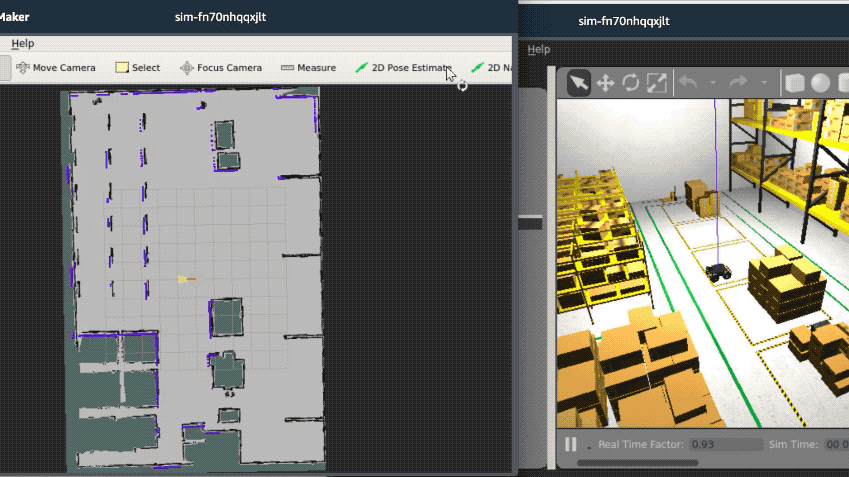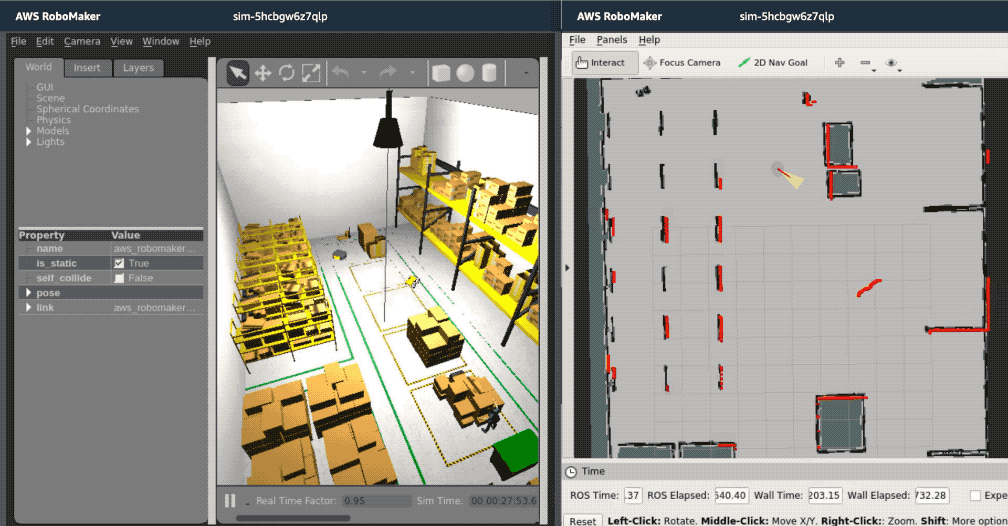AWS Robotics Blog
Fleet and multi-robot simulations in AWS RoboMaker
Robotics developers often need to run a fleet of robots in a simulation. Common scenarios include:
- Verifying the robots are able to navigate past each other in the same environment
- Collecting data from multiple robots running at the same time for a custom data-driven application
- Using machine learning to train robots how to react to other robots that are active in the same environment
- Developing algorithms (such as path planning) that use state data from other robots in the fleet to shape behavior
Simulation can help in these scenarios, but it can be challenging to setup a virtual environment that scales with increasing number of robots. This is because Gazebo simulations are usually done on servers on-premise, and running multiple robots in Gazebo can require expert knowledge to manage namespaces, tf-tree separation, and compute limits.
AWS RoboMaker offers simulation in the cloud that can build simulations of a fleet of robots at scale.
The following simulation is hosting a single robot in a simulated warehouse environment. The robot is receiving commands through the robot-visualizing tool Rviz.

You can add additional robots to the simulation:

You can also add functionality to the robot application to help its sensors “see” other robots in the shared environment. This can help you develop and refine algorithms:

If you are interested in learning more about this technology, please Contact Us! You can also check out the multi robot sample application that we have open-sourced at https://github.com/aws-samples/multi-robot-fleet-sample-application.